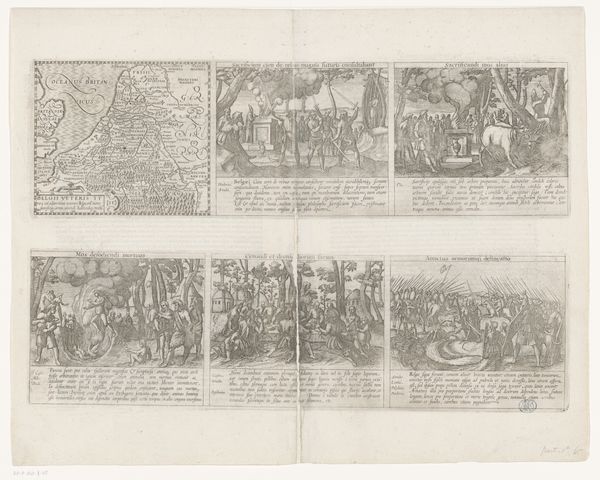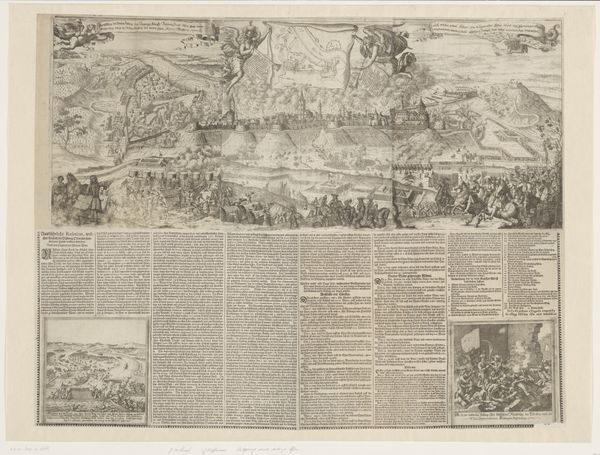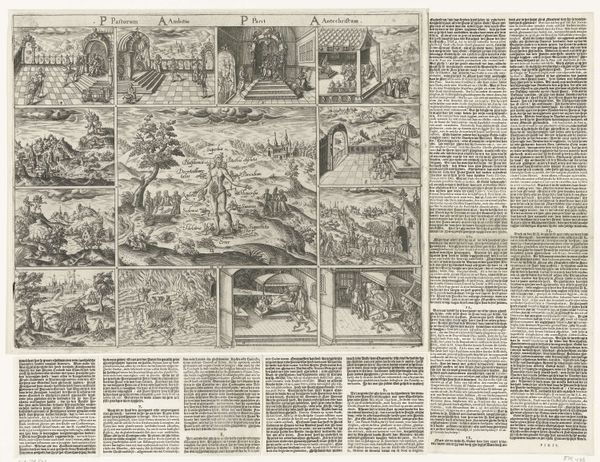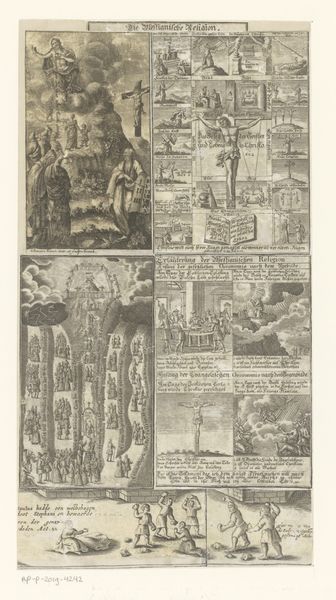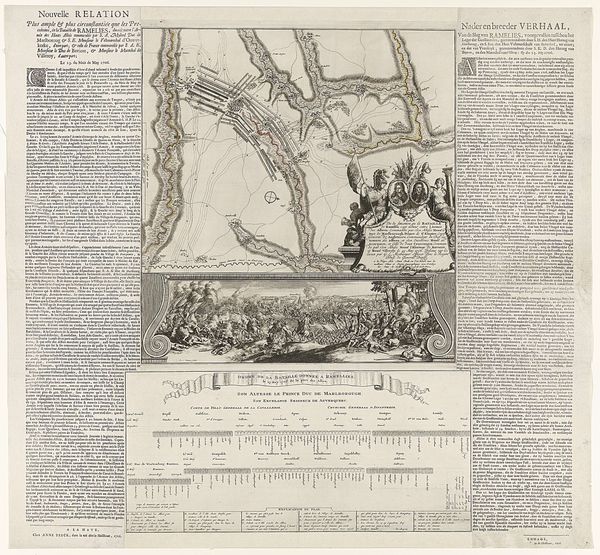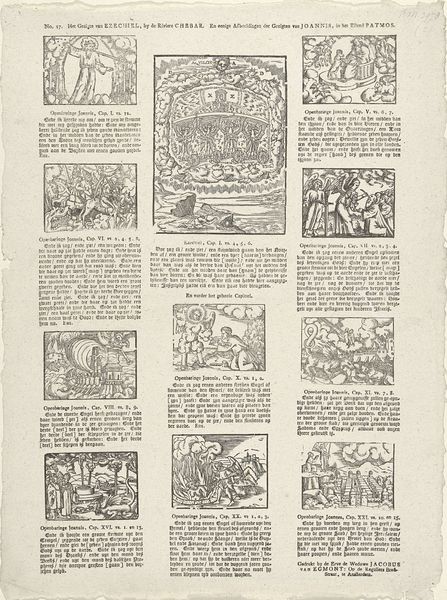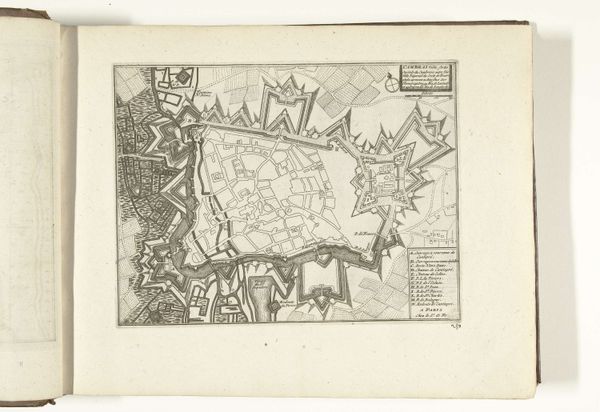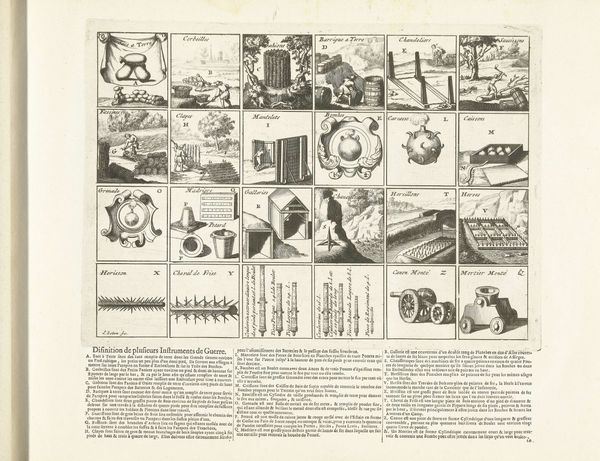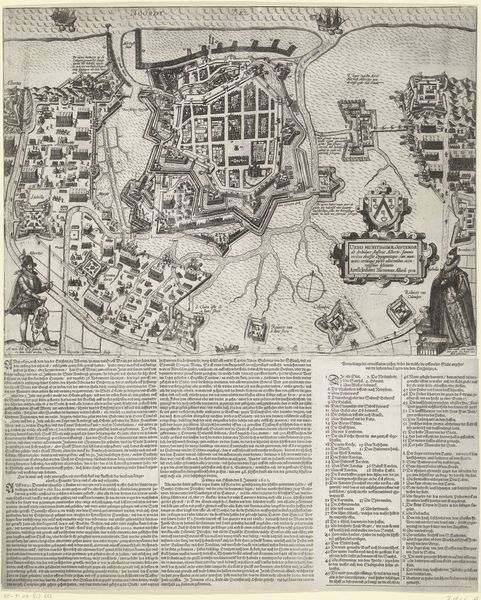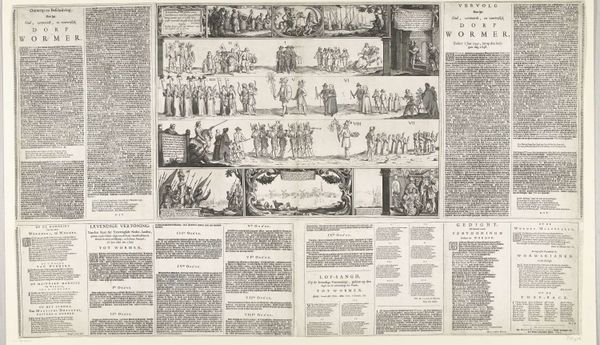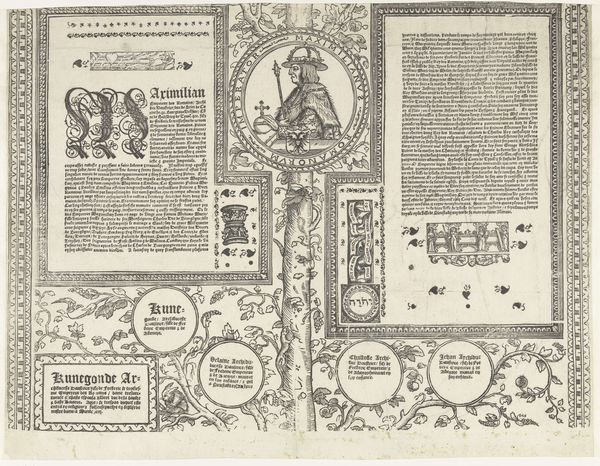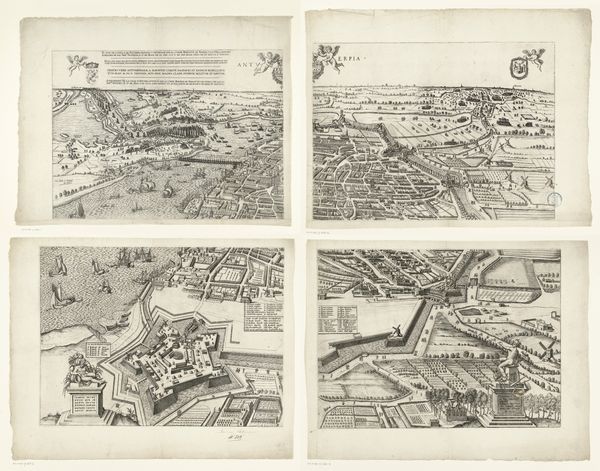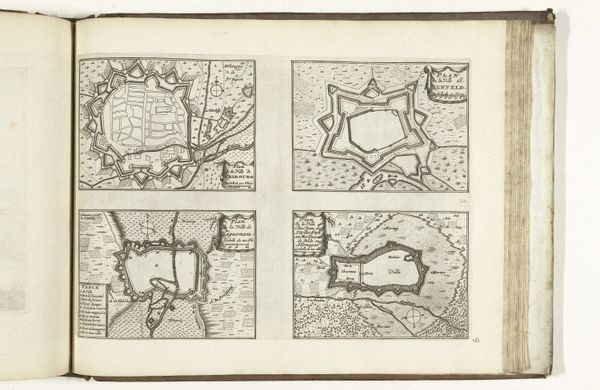
print, engraving
#
dutch-golden-age
# print
#
landscape
#
cityscape
#
history-painting
#
engraving
Dimensions: height 368 mm, width 283 mm
Copyright: Rijks Museum: Open Domain
Curator: I am struck by the intricacy and ambition of this print, “The Siege of Ostend and the New Storm Bridge, February 1604,” made anonymously. The engraving captures a detailed aerial perspective of the siege alongside technical illustrations. What catches your eye? Editor: The sheer labor that this print depicts. So much deliberate, material force being brought to bear. I’m drawn to the image of the "storm bridge," a construction to lay siege; a crude, monumental engineering. It appears heavy, cumbersome, and slow. Curator: Yes, the print meticulously documents not just the geographical layout of the siege but also the innovations in military engineering deployed. We can look at this work to study the politics of war during the Dutch Golden Age and what this meant to shape the space and resources of Ostend. The depiction of the storm bridge points to shifting values and cultural anxiety over war, labor, and trade. Editor: That makes me think of how the print functions almost as a manual or advertisement. The display of innovative technology suggests a fascination with the mechanization of warfare, potentially celebrating its ingenuity and efficacy. How the print’s distribution and consumption, therefore, furthered these goals. Curator: Absolutely. This image isn't simply a historical record. It's actively shaping perceptions of the siege, participating in a larger narrative of Dutch military prowess. Consider, for example, that by visually foregrounding this technical prowess it risks invisibilizing all those on both sides subject to violence. I find it telling how this period is often depicted via grand-scale prints that sanitize violence, instead of representing bodies suffering due to conflicts of this sort. Editor: True, the material violence and social costs remain unrepresented within the frame of the engraving itself. Its smooth lines conceal human trauma behind technological progress. Curator: Ultimately, in reading it through this lens we recognize this object performs both artistic and ideological work—defining how war and identity were fashioned in the 17th century. Editor: The artist captured this image on this specific material using deliberate material interventions to create an account of warfare. I come away appreciating the detail and considering the broader labor behind not only the subject it represents, but also the print itself.
Comments
No comments
Be the first to comment and join the conversation on the ultimate creative platform.
